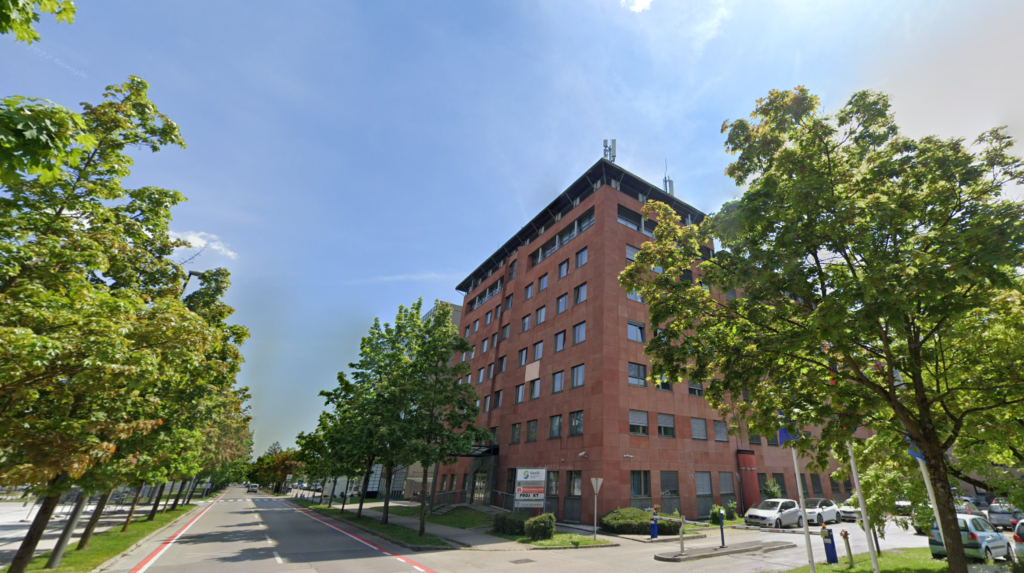Geological Survey of Slovenia
Contact information
Geological Survey of Slovenia (GeoZS)
Dimičeva ulica 14
SI-1000 Ljubljana, Slovenia
Contact person:
dr. Miloš Bavec, director
Jasna Šinigoj
Website: https://www.geo-zs.si
Facebook: GeoloskizavodSlovenije
Linkedin: Geological Survey of Slovenia
YouTube: @geoloskizavodslovenije6306

GeoZS joined EPOS Slovenia in 2016 and became a member of EPOS TCS GIM in 2019. GeoZS is a service provider to EPOS ERIC for Surface geological maps and a data provider for Boreholes, 3D models and Mineral Resource data. GeoZS has established 5 geological field observatories (https://glvn.geo-zs.si/) to research landslide and rockfall formation, groundwater nitrate concentrations, water flow and contaminant transport in the unsaturated zone and shallow geothermal potential use. The measurement data from all observatories can be accessed and analysed in real time via the eTeren platform.
Research
Within EPOS Slovenia infrastructure GeoZS has established 5 geological field observatories (https://glvn.geo-zs.si/), sensor network infrastructure (eTeren) and purchased equipment for determination of seismic velocities in boreholes to contribute to:
- understanding natural and anthropogenic factors and their impact on the occurrence of landslides and rockfalls,
- improving or achieving good chemical status due to excessive nitrate concentrations in groundwater,
- improving the assessment of water flow and pollutant transport in the unsaturated zone of a highly permeable gravel aquifer, and thus more effectively designating water protection zones of water sources,
- improving seismic depth models and evaluating the hydrogeological and geomechanical properties of drilled rocks,
- promoting the sustainable use of shallow geothermal potential.
Data are accessible in real time through the eTeren infrastructure for the purposes of research, government policy, and education.
Geological field observatories provide long-term monitoring and data collection related to geological processes in the Earth’s crust, contributing to a better understanding of natural processes and their interactions. Geological data and knowledge of the geological structure form the basis for activities of national importance, such as drinking water supply, urban planning and construction, mineral resource management, protection from natural disasters, especially floods and landslides, environmental protection, and thus public health, and are ultimately of interest to the general public.
RI-SI-EPOS project
As part of the RI-SI-EPOS project, GeoZS has purchased equipment for determination of seismic velocities in boreholes, equipment for establishing 5 geological field observatories (https://glvn.geo-zs.si/) and established the sensor network infrastructure (eTeren). eTeren infrastructure receives real-time data from all measurement sensors at the geological field observatories.
Observatory for the study of landslide dynamics – Tevče
The aim of this research is to determine the activity of landslides in a populated area. The landslide area has been partially remediated in the past, but landslide activity has not stopped. The observatory is located in the Tevče area in the Laško municipality and has five boreholes equipped with two piezometers and three inclinometers.
Observatory for the study of rockfall formation
A rockfall is the result of a long geological process (tectonics, weathering, etc.), while the fall is sudden. By setting up an electronic geotechnical monitoring system at 5 locations in eastern Slovenia (Zasavje, Smrekovec, Mežica, Brezno and Žužemberk), we monitor the propagation and occurrence of cracks in rock walls caused by meteorological factors and the geological characteristics of the rock.
Observatory for monitoring nitrate in groundwater
As everywhere in Europe, nitrate is currently the most important groundwater pollutant in Slovenia. Due to exceedances of the maximum permissible nitrate concentrations, three groundwater bodies in Slovenia are in poor chemical status: the Drava, Mura and Savinja river basins. In order to develop scientifically sound proposals for improving the status of groundwater, an observatory was established to monitor nitrate levels in groundwater.
Observatory in the unsaturated zone – Lysimeter
By determining the transport parameters of various contaminants in the lysimeter, we contribute to better understand the migration processes of contaminants in aquifers from their origin to their transport in the soil, through the unsaturated zone, and to groundwater. The lysimeter is located in SelniškaDobrava, in the area of the main gravel aquifer with high permeability, which is the source of water supply for Maribor city.
Observatory for monitoring the impact of shallow geothermal energy use
The City Municipality of MurskaSobota is located in the northeastern part of Slovenia. The average heat flux density in this area is about 110 mW/m2, which is relatively high compared to other parts of Slovenia. The aim of this observatory is to monitor the temperature changes of groundwater, which will be used for the management and sustainable use of this renewable energy resource.
Measurement of seismic velocity properties of rocks in boreholes
Measurements are done in available old and new uncased boreholes which are filled with fluid. Collected data about the seismic velocities of rock will be usedfor improving seismic depth models and evaluating the hydrogeological and geomechanical properties of drilled rocks.
RI-SI-EPOS equipment
